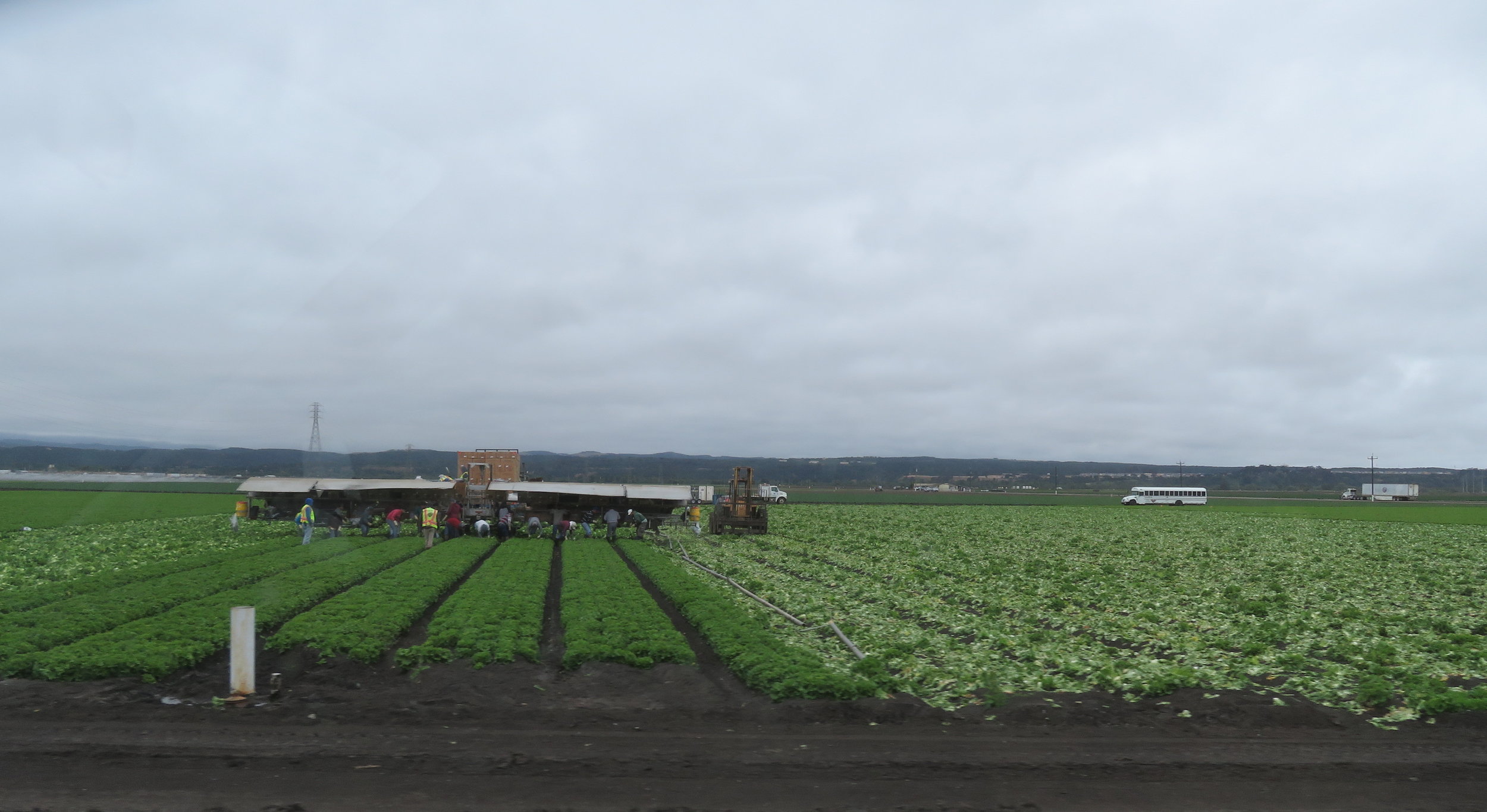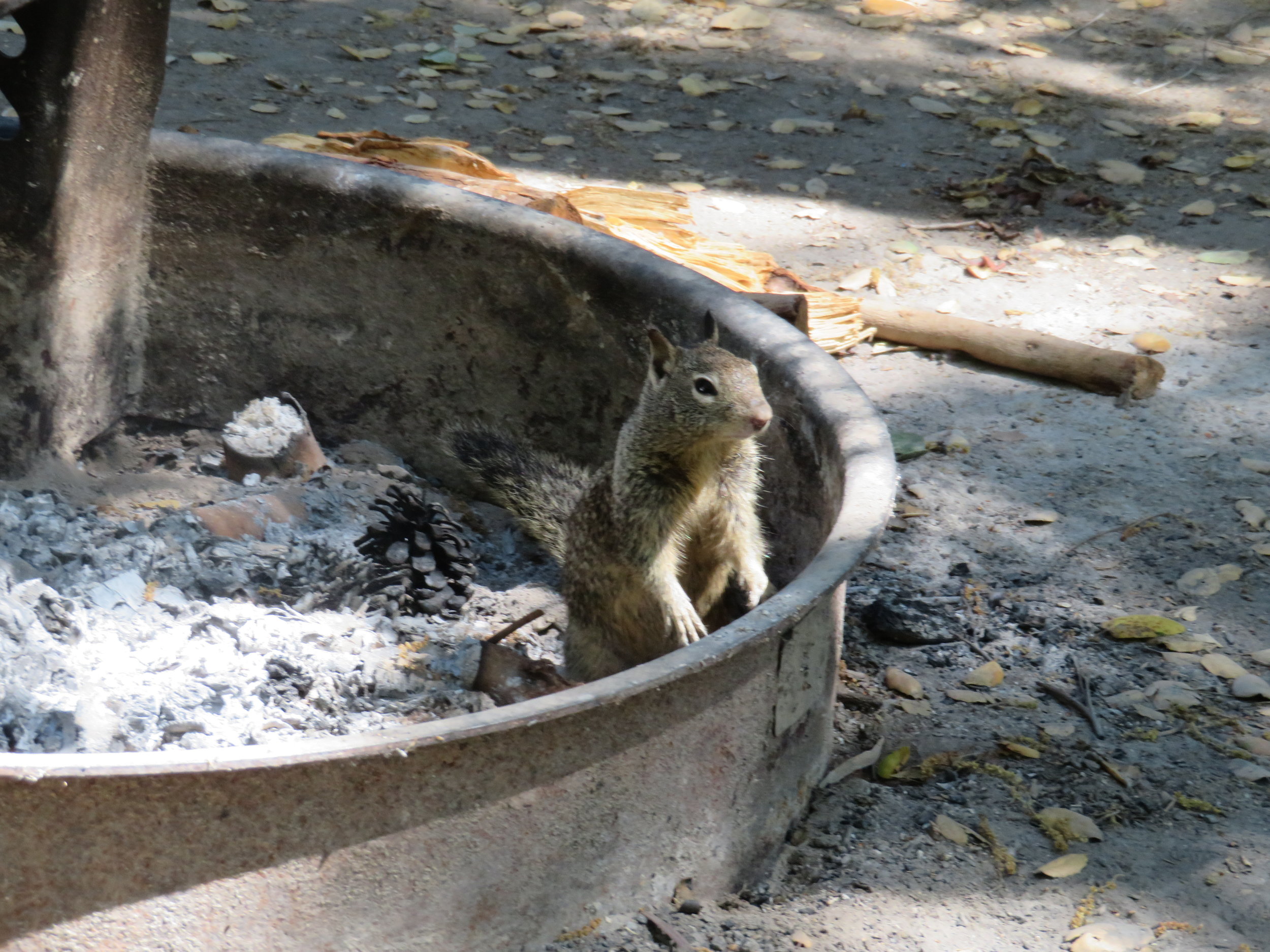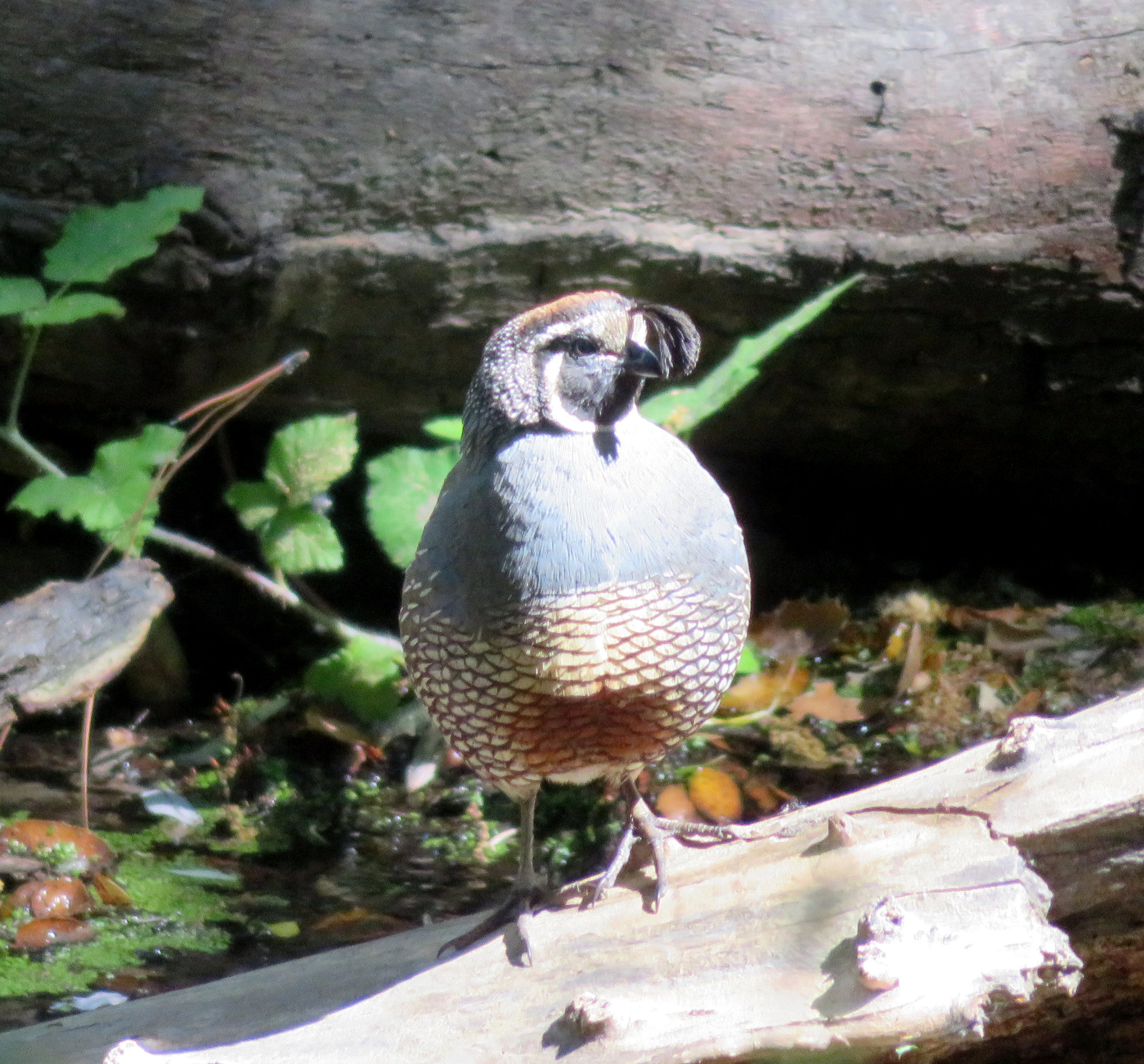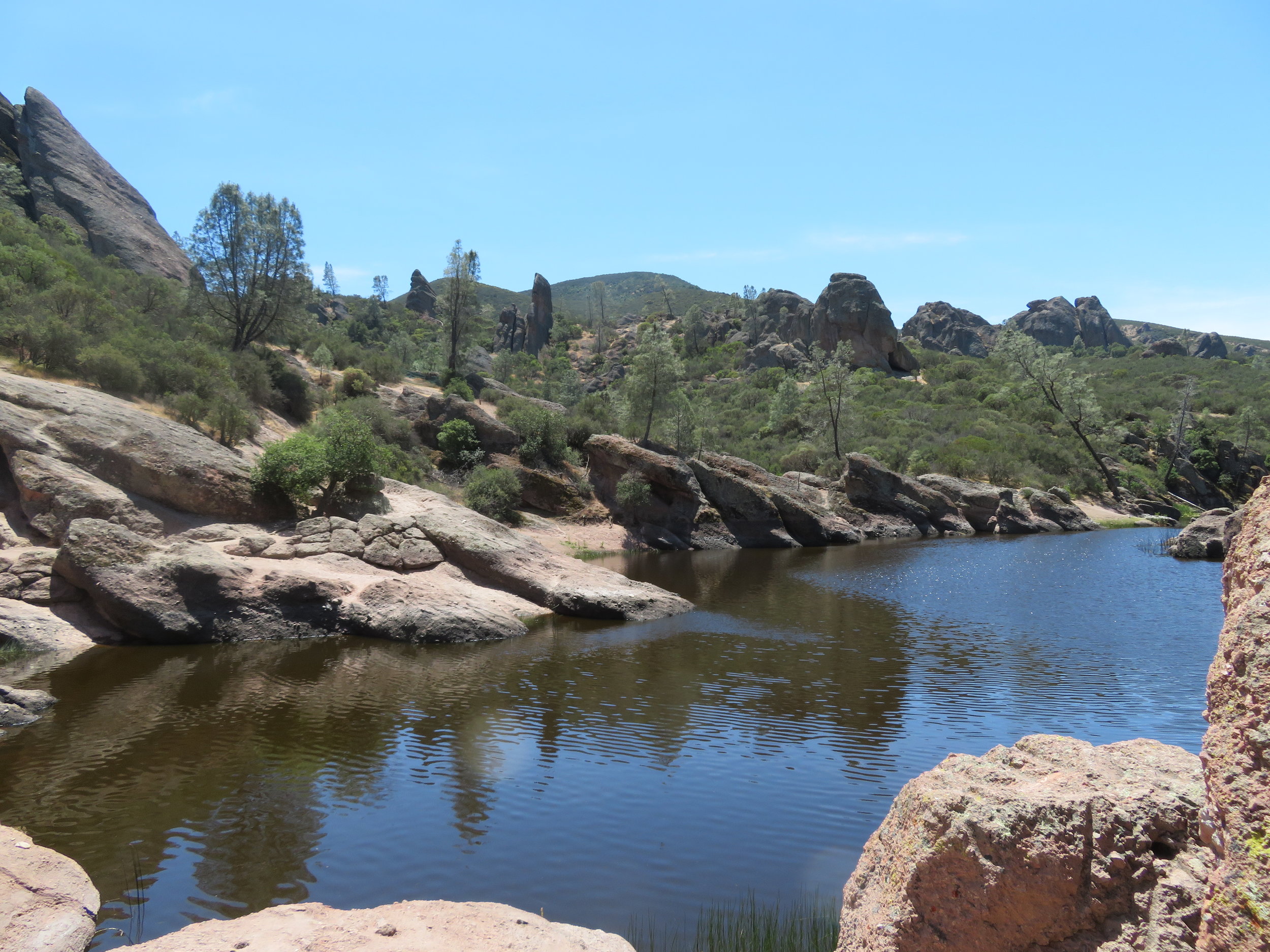Great Western Loop – Pinnacles National Park (Part 1)
/Day 17 – 2026 miles traveled
The drive from Monterey to Pinnacles National Park is less than 100 miles, but included stops at WalMart and the local Good Will. We provisioned at WalMart and bought a warm comforter. At Good Will, we lucked out with a heavy sweater and jacket for David and some sweat pants and a fleece for me ... all for ~$15. We intend to be warm for the rest of this trip, but we're still budget-minded.
The route snaked through rolling hills, ranches, farms and high chaparral. Horses, cows and other livestock grazed contentedly. We passed by fields of lettuce, broccoli, cauliflower and artichokes. White school buses cart workers to the fields. Hunched over, hoeing and picking all day long, the backbreaking work made us ache at just the thought. We whizzed past Castroville and learned it was the ‘artichoke capital of the world’ … hmmm, maybe we’ll need to go back for the upcoming artichoke festival.
We’d never heard of Pinnacles National Park before. It’s not one of the more famous parks within the NPS system. Teddy Roosevelt proclaimed it a national monument way back in 1909 and Congress protected its 26,000 splendid acres by declaring it a national park in 2013. There’s a camp store, a Visitor’s Center, a pool, coin showers ($1.25 for 7-1/2 glorious minutes), potable water and flush toilets. No internet or phone, but hey, this is a campground. It was surprisingly busy for a mid-week day in May. Evidently, it’s only been a secret to us. We were fortunate to get a campsite for the four days we requested.
We set up camp, then set about exploring our new neighborhood. Several longer hikes are available, but since it was late in the day, we chose a short one mile trek to the historic Bacon Ranch. Ben Bacon was born in this valley in 1866, homesteaded his property, married and raised a family. A dryfarmer (wheat & barley mostly), it was pretty much subsistence living, but they managed through droughts, floods, earthquakes and fires. The ranch was owned by the family for generations, but was uninhabited in later years and fell into disrepair. It was acquired by the park in 2006 with the intention of making it into a future interpretive center.
acorn woodpeckers make holes in trees to hide acorns as evidenced by the photo to the right.
As we walked back to the campsite from the ranch, I couldn’t help noticing the variety and abundance of birds. There were squawks, hoots, coos, peeps and tweets, screeches, honks, even gobbles … we heard it all. Most prevalent were the jackhammer sounds of the acorn woodpeckers which were in great abundance here.
A local checks out our fire ring.
A little chipmunk gave us the once over, but didn't stray too far from his branch.
Scrub jays are beautiful, but mischievous, snatching anything left on our picnic table.
Cheeky Steller’s jays and scrub jays landed on our table snatching up crumbs. Chattering squirrels raced through the camp and up trees. A Merriam’s chipmunk, a bit less brazen, sat on a nearby tree branch and gave us the once over. The cacophony of bird and animal song continued till long after dark and resumed at dawn.
Day 18 – Hiking the Bear Gulch Trail & Beyond
You’ll be happy to know that our new comforter has done wonders for our sleep. We’re warm and toasty despite the 46F early morning temperatures. Remarkably, the mattress even feels better … body heat, maybe?
California quail
We awakened this morning to the jackhammer sounds of a nearby acorn woodpecker. As I sat in my camp chair sipping coffee and contemplating the early morning camp sounds, sights and smells, a California quail couple paraded right in front of my feet, not taking notice of me at all until one looked up and made eye contact, then they couldn’t hightail it into the bush fast enough.
Click on any thumbnail below to enlarge the image.
Consulting our park trail guide, we decided to stray a bit further today and hike the Bear Gulch Trail, a moderate 6-mile roundtrip that begins at the camp store and leads to the Nature Center. The morning was glorious for walking ... sunny, blue sky, just the right temperature. Canyon live oak, gray pine and manzanita cover the slopes. The trail alternated between open grasslands and dense forest. Wildflowers line the trails and butterflies flitted amongst them. Every once in awhile, tall, craggy pinnacles, for which the park is named, peek out of the dense foliage. Rock climbers could be seen scaling some of them. We traipsed along the Chalone and Bear Creeks, up and down the well-trod path, chatting amiably about our plans and our surroundings and before we knew it the Nature Center came into view.
Still feeling energetic, we continued onto the Moses Spring Trail and climbed more steadily along narrow dirt trails, under ledges, over boulders, through tunnels and caves, and up narrow, well-worn stairs carved into the side of cliffs by the CCCs nearly a century ago.
A lovely mountain reservoir ... great place for a rest and a snack.
We climbed the final few feet and were rewarded with a scenic mountain reservoir within a stone’s throw. We sat and enjoyed the sun and an apple. Fearless squirrels posed and then promptly approached, demanding their due. They obviously hadn’t read the “Do NOT feed the animals” signs.
Fearless squirrels posed, then brazenly begged for food.
The Rim Trail was an alternate descent and took us on a new route back to the Nature Center ... mostly downhill. There was still three miles of the Bear Gulch Trail to negotiate and we were pretty tuckered out by the time we got back to the campsite. Total hiked miles? 10.2, which translates to 24, 132 steps. It was definitely an Ibuprofen night.
But we're be ready for more ... are you? Click here to see more of Pinnacles National Park
























